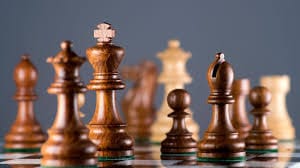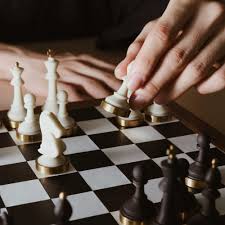Chess
Chess is more than a board game—it’s a global phenomenon that has captivated minds for over a millennium. Renowned for its blend of strategy, tactics, and intellectual depth, chess remains a cornerstone of competitive gaming, cultural heritage, and cognitive development. From ancient royal courts to modern online platforms, this two-player game continues to challenge and inspire players of all ages. This article explores the origins, mechanics, appeal, educational benefits, and cultural significance of chess, revealing why it endures as the ultimate test of mental prowess.
Origins and Historical Evolution
The roots of chess trace back to 6th-century India, where it emerged as chaturanga, a game simulating military battles with pieces representing infantry, cavalry, elephants, and chariots. By the 10th century, chaturanga spread to Persia as shatranj, evolving into a precursor of modern chess. The game reached Europe via Islamic Spain and trade routes, undergoing key changes by the 15th century: the queen became the most powerful piece, and the bishop gained its modern range, creating the chess we know today.
Chess gained prominence in medieval Europe, with manuals like the 13th-century Libro de los Juegos detailing its rules. By the 19th century, it became a competitive sport, with figures like François-André Philidor emphasizing pawn structure as the “soul of chess.” The establishment of the World Chess Championship in 1886 formalized its competitive landscape. Today, chess thrives on platforms like Chess.com and Lichess, with millions playing online, from casual matches to grandmaster tournaments.

How Chess Works
Chess is played on an 8×8 board with alternating light and dark squares, using 32 pieces (16 per player). Each player controls an army of pawns, rooks, knights, bishops, a queen, and a king, each with unique movement rules. The objective is to deliver checkmate, trapping the opponent’s king so it cannot escape capture.
- Setup: White and Black place their pieces on opposite sides. Pawns occupy the second rank, while rooks, knights, bishops, the queen, and the king line the first rank.
- Gameplay: Players alternate moves, with White moving first. Pawns advance one or two squares forward (capturing diagonally), knights move in an L-shape, bishops slide diagonally, rooks move horizontally or vertically, the queen combines bishop and rook moves, and the king moves one square in any direction.
- Special Moves: These include castling (moving the king and rook simultaneously for defense), en passant (a special pawn capture), and promotion (upgrading a pawn to a queen or other piece upon reaching the opponent’s back rank).
- Winning: A player wins by achieving checkmate or if the opponent resigns. A stalemate (no legal moves without check) or other conditions, like insufficient material, result in a draw.
Chess balances tactics (short-term maneuvers) and strategy (long-term planning), with players vying for positional advantage through opening theory, middlegame attacks, and endgame precision.
Why Chess Captivates
Chess appeals through its infinite depth within simple rules. A finite board yields near-infinite possibilities—estimated at 10^120 unique games—ensuring no two matches are identical. This replayability engages players from novices to grandmasters. The game’s strategic complexity rewards foresight, pattern recognition, and adaptability, making every move a mental puzzle.
The competitive spirit of chess fuels its allure. From local clubs to global tournaments like the FIDE World Championship, players test their skills against opponents of varying strength. Online platforms have democratized access, with Chess.com reporting over 100 million users by 2025. Blitz and bullet chess, with time controls as short as one minute, add adrenaline, while classical chess emphasizes deep calculation.
Chess also fosters a sense of community. Players share openings like the Sicilian Defense or Ruy Lopez on forums, analyze games on Lichess, and watch grandmasters like Magnus Carlsen on Twitch. Its universal rules transcend language and culture, uniting players worldwide.
Educational and Cognitive Benefits
Chess is a powerful educational tool, often called a “gymnasium for the mind.” Research shows it enhances cognitive skills like problem-solving, memory, and concentration. A 2016 study found that children playing chess improved in math and reading scores, as the game reinforces pattern recognition and logical thinking.
For young players, chess teaches numeracy (via board coordinates) and spatial reasoning (visualizing moves). It also builds emotional resilience, as players learn to handle losses and plan under pressure. In schools, chess programs, like those supported by the United States Chess Federation, promote critical thinking and discipline. For adults, chess sharpens decision-making and may delay cognitive decline, with studies linking it to improved memory in older populations.
Chess also fosters social skills. Tournaments encourage sportsmanship, while club play builds camaraderie. Its accessibility—no physical strength required—makes it inclusive for all ages and abilities.
Cultural Significance and Modern Impact
Chess is a cultural icon, appearing in literature (The Luzhin Defense), film (Searching for Bobby Fischer), and art. Its symbolism—kings and queens, battles of wit—resonates in metaphors for strategy and power. The 1972 Fischer-Spassky match captivated the world, blending chess with Cold War drama, while Carlsen’s dominance and Netflix’s The Queen’s Gambit (2020) sparked renewed interest.
The digital age has transformed chess. Platforms like Chess.com and Lichess offer free play, tutorials, and AI analysis, making grandmaster-level insights accessible. Stockfish and Leela Chess Zero AIs challenge human players, while online tournaments draw millions. Posts on X highlight chess’s vibrant community, with players sharing puzzles and debating openings like the London System.
Chess also bridges generations. Grandparents teach children classic openings, while kids introduce elders to online chess. Its presence in schools, prisons, and therapy settings underscores its role in personal growth and rehabilitation.
Challenges and Future
Despite its strengths, chess faces challenges. The rise of AI has sparked debates about cheating, with tools like Stockfish detecting suspicious play in online matches. Accessibility remains an issue in underserved regions, though initiatives like FIDE’s outreach programs aim to expand access. The game’s complexity can intimidate beginners, but platforms offering tutorials and casual modes mitigate this.

Looking ahead, chess is poised for growth. Esports integration, virtual reality boards, and AI-driven training tools promise innovation. The 2026 World Championship and rising stars like Alireza Firouzja ensure continued excitement.
Conclusion
Chess is a timeless testament to human intellect and strategy. Its simple board belies a universe of possibilities, challenging players to think deeply and act boldly. From ancient India to modern screens, chess unites cultures, sharpens minds, and inspires communities. Whether played in a park or a virtual arena, this game of kings remains a beacon of mental agility, proving that true mastery lies in the next move.
